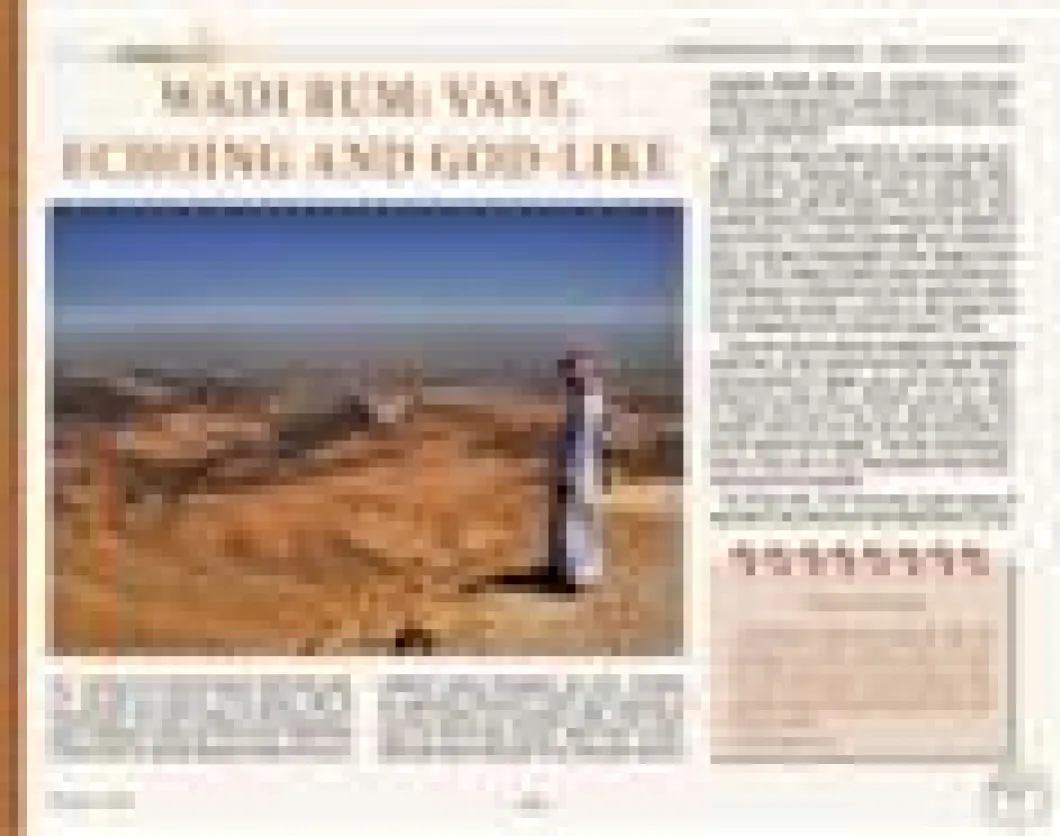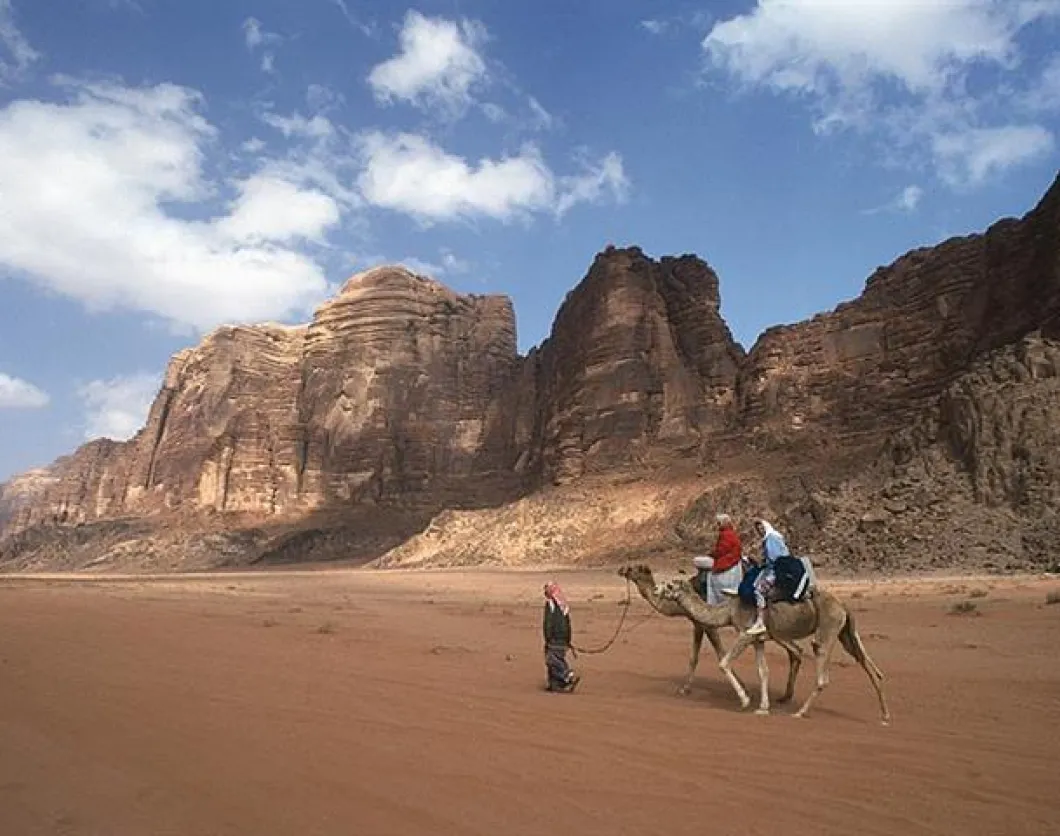Stunning in its natural beauty, Wadi Rum epitomizes the romance of the desert. With its "moonscape" of ancient valleys and towering sandstone mountains rising out of the sand, Wadi Rum is also home to several Bedouin tribes who live in scattered camps throughout the area. Climbers are especially attracted to Wadi Rum because of its sheer granite and sandstone cliffs, while hikers enjoy its vast empty spaces. Wadi Rum is probably best known because of its connection with the enigmatic British officer T.E. Lawrence, who was based here during the Great Arab Revolt of 1917-18. Much of David Lean’s “Lawrence of Arabia” was filmed in Wadi Rum.
The main route to Wadi Rum, and the small village of Rum, branches east of the Desert Highway about five kilometers south of Quweira and 25 kilometers north of Aqaba. From there the road extends about 35 kilometers through the desert to end at Rum. It is best to take your own vehicle to Rum, as public transportation to the village is very difficult. The village consists mainly of several hundred Bedouin inhabitants with their goat-hair tents and concrete houses, a school, a few shops and the headquarters of the famous Desert Patrol.
There are several options available for exploring Wadi Rum. At the Government Rest House, located just inside the village, you can rent out a four-wheel-drive jeep with a Bedouin driver for short or longer day tours of the area. Also available are camels, which you can hire for short excursions or for the desert trip to Aqaba. The only accommodations in Rum are in the Government Rest House, where tents are available.
For those with a bit more time and/or sense of adventure, the best way to see Wadi Rum is by hiking and camping in it. Indeed, the vast silence and grandeur of the landscape is best experienced on foot. All you need for hiking in Wadi Rum is plenty of water (at least 2-3 liters per day), some food, good shoes and a sleeping bag. Those with a four-wheel drive, a map and plenty of fuel can see more of the landscape, while saving their energy for spectacular hikes such as the Rock Bridge of Burdah, one of Wadi Rum’s most popular attractions.
True adventurers can test their skills and endurance by climbing Jordan's highest mountain, Jabal Rum. The climb is a grueling and treacherous challenge that should only be attempted by those of stout heart and indomitable will. A guide is recommended for the ten-hour round trip to the summit, and arrangements should be made the previous day at the Government Rest House.
Offroaders should exercise care in staying on the tracks to avoid plowing over desert vegetation. Don’t venture too far away from Rum, and remember to bring plenty of water. Highly recommended for adventure-seekers are Tony Howard's detailed Treks and Climbs in the Mountains of Wadi Rum & Petra or the less extensive Walks & Scrambles in Rum.
Bedouin People
The Bedouin people that inhabit the area still maintain their semi-nomadic lifestyle. They are hospitable and offer a friendly welcome to visitors, often inviting them to sit and enjoy a coffee or even a meal. However, always remember to ask permission before taking photographs of the local Bedouin people.










